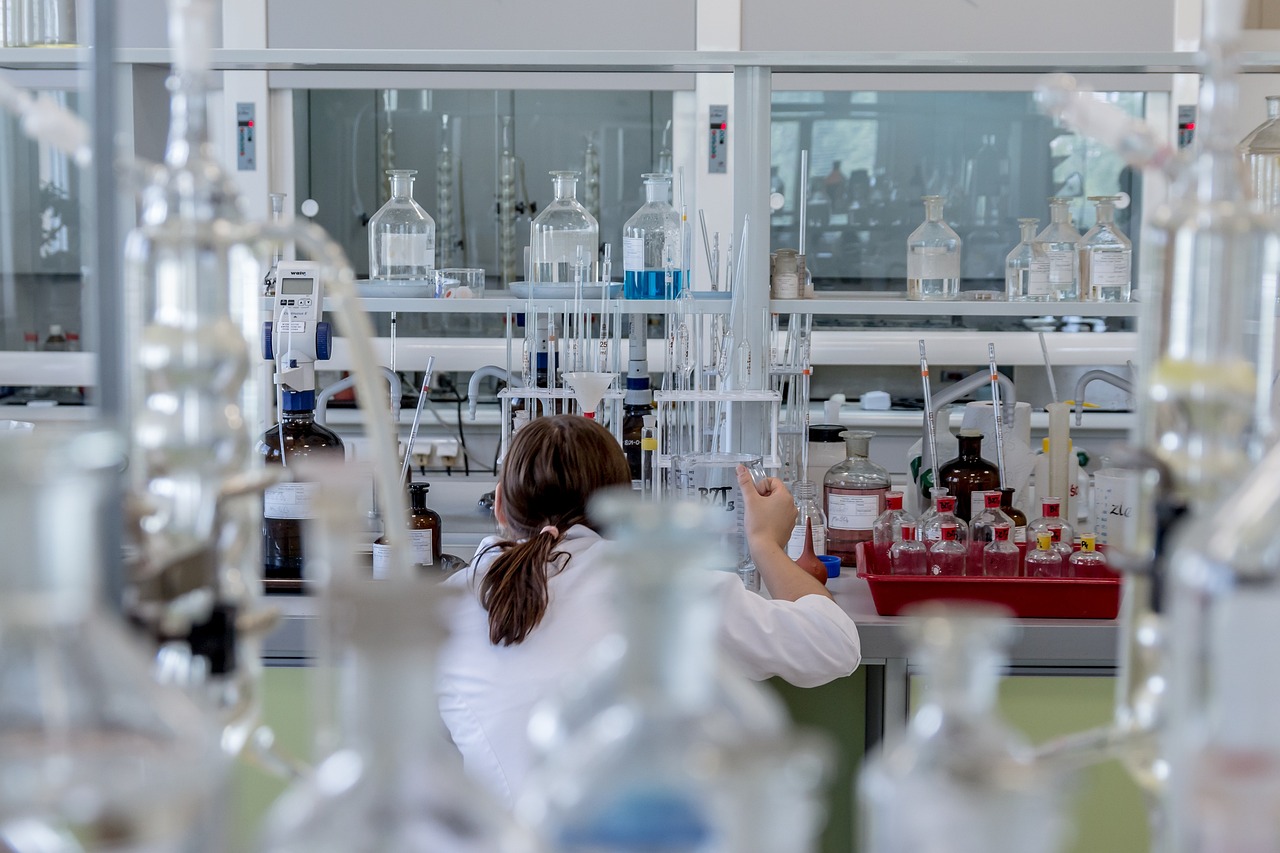Twinloop project team
Recrutement
Offres à pourvoir actuellement
- Stage Master 2 -
Contaminants Organostaniques GC-MS/MS- (closed) - Postdoctoral Position offer (published 02/09/2025)
- Technicien-ne en analyse chimique (/!\ Poste en Mobilité**, closed)
- Postdoctoral Position offer (published 16/07/2025)
- Postdoctoral Position offer (published 20/05/2025)
Postdoctoral Position offer
Background
Oniris, LABERCA, France, is offering a 2-year postdoctoral contract in the field of analytical chemistry applied to the characterisation of organic contaminants in an interdisciplinary context integrating the food, circularity and environmental dimensions.
The work is part of two collaborative National and European research projects:
- TWINLOOP (ANR project, 2025-2029, 21 partners), focused on the characterisations of chemical contaminants in plastics intended for food contact recycling processes, using a variety of techniques.
- PARC (EU Horizon EU Cofund, 2022-2029), sub-project P4.3.3.b_Y2_E02-Sentinel animals_ONIRIS (15 partners) investigating animal species as sentinels of the environment and human chemical exposomes.
Main missions
- Development and application of non-targeted analytical methods (LC/IM/HRMS, timsTOF Pro II) for the detection and characterisation of organic contaminants in various matrices (plastics, bees, aquatic invertebrates).
- HRMS data acquisition and annotation, assessment of exposure profiles.
- Participation in the analysis of the chemical exposome within an interdisciplinary framework.
- Drafting scientific reports, contributing to the writing of articles and promoting results of the projects.
Candidate profile
- Strong chemical background with a PhD in Analytical Chemistry or equivalent.
- Hands on experience with analytical method development and advanced data analysis within chromatography and HRMS workflows.
- Experience or knowledge about chemical contaminants, food safety and exposome.
- Good collaboration and communication skills (written and spoken English).
Working environment
The post-doctoral fellow will join a dynamic team in a recently renovated and very well-equipped laboratory, with more than 25 mass spectrometers using a variety of technologies (Orbitrap, QTOF, IMS, GC-MS/MS, LC-MS/MS, etc.). Based in Nantes, France, LABERCA offers a stimulating environment at the interface between academic research and public expertise.
Application
Applications must be submitted to ronan.cariou(at)oniris-nantes.fr as one pdf file containing all materials to be given consideration. The file must include, a cover letter, a curriculum vitae and supporting letters. before Oct 15, 2025
Working application
Technicien-ne en analyse chimique (Campagne Mobilité 2025)
Ce dispositif propose une offre large d’opportunités de mobilité en affichant un nombre important de besoins susceptibles d’être pourvus et favorise ainsi la diversité des parcours au sein de l’Institut : les profils de poste proposés comportent un descriptif des missions et activités attendues ainsi que l’affectation géographique.
Il s'adresse à l'ensemble des fonctionnaires et agents en CDI des trois fonctions publiques. Les mobilités à INRAE se font à corps équivalent.
Pour les chercheurs et les chercheuses, la mobilité se prononce sur des thématiques de recherche. Une fois la mobilité actée, il leur sera demandé de bâtir, en lien avec leur directeur ou directrice d'unité, un projet de recherche précis et complémentaire définissant les travaux à mener.
Calendrier 2025
- Ouverture des inscriptions : 16 juillet 2025
- Clôture des inscriptions : 9 septembre 2025
- Arbitrage du Collège de direction sur les priorités retenues : 27 octobre 2025
- Transmission des résultats aux candidats : fin octobre 2025
- Date de prise de fonction : à partir de février 2026
Pour toutes questions, contactez : mobilite@inrae.fr
Postdoctoral Position offer
Contexte de travail
LABERCA (Laboratory for the Study of Residues and Contaminants in Food) is offering a postdoctoral is offering a postdoctoral contract for 1 year in the framework of PARC project.
Partnership for the Assessment of Risks from Chemicals (PARC) aims to develop next-generation chemical risk assessment to protect human health and the environment. It supports the European Union's Chemicals Strategy for Sustainability and the European Green Deal's “Zero pollution” ambition with new data, knowledge, methods and tools, expertise and networks.
The PARC programme has three main objectives:
- Develop the scientific skills needed to address current and future challenges in chemical safety
- Provide new data, methods and innovative tools to those responsible for assessing and managing the risks of chemical exposure
- Strengthen the networks which bring together actors specialised in the different scientific fields contributing to risk assessment
Main missions
- The 12 months position aims to contribute to the development of a new analytical method for PFAS suspected screening on human serum samples. The contribution will cover all stages of the method, from the preparation of human serum samples to the optimisation of mass spectrometry analyses, including non-targeted analytical processing workflows for application to human biological samples..
Candidate profile
- PhD in analytical chemistry.
- Strong expertise in mass spectrometry (especially HRMS) and both targeted and nontargeted approaches.
- Experience with complex data processing (software such as Compound Discoverer, MZmine, Skyline, etc.) is a plus.
- Strong interest in exposome research, chemical safety, and interdisciplinary science.
- Team-oriented, autonomous, and scientifically rigorous.
Working environment
The postdoctoral researcher will join a dynamic team within a recently renovated and fully equipped laboratory, with over 25 mass spectrometers of various technologies (Exactive, QTOF, IMS, GC-MS/MS, LC-MS/MS, etc.). LABERCA provides a stimulating research environment at the interface between academic research and public expertise.
Application
Send your CV, cover letter, and if possible, two letters of recommendation (combined into a single PDF file) to: ronan.pommereuil(at)oniris-nantes.fr, before August 15, 2025
Note: be sure to go trough Mailinblack service email validation process
Working application (copie 1)
Postdoctoral Position offer
Contexte de travail
LABERCA (Laboratory for the Study of Residues and Contaminants in Food) is offering a postdoctoral contract for a minimum of 1 year (renewable once), in the field of analytical chemistry applied to the characterization of organic contaminants. The position is part of an interdisciplinary framework combining environmental, food, and health-related aspects (One Health approach). The research will contribute to two collaborative projects:
- ICEBERG (Horizon Europe project), focused on characterizing the chemical exposome and its impacts across the environment-food-health continuum.
- PLAPOTEMIX (French ANR project), dedicated to studying micro
Main missions
- Develop and apply targeted and non-targeted analytical methods (LC/GCMS/MS/HRMS) for detecting and characterizing organic contaminants in various matrices (snow, sediments, food, microplastics, biological matrices).
- Process HRMS data, annotate suspect signals, and evaluate exposure profiles.
- Participate in the chemical exposome analysis within an interdisciplinary framework.
- Contribute to scientific reporting, manuscript writing, and dissemination of project results.
Candidate profile
- PhD in analytical chemistry.
- Strong expertise in mass spectrometry (especially HRMS) and both targeted and nontargeted approaches.
- Experience with complex data processing (software such as Compound Discoverer, MZmine, Skyline, etc.) is a plus.
- Strong interest in exposome research, chemical safety, and interdisciplinary science.
- Team-oriented, autonomous, and scientifically rigorous.
Working environment
The postdoctoral researcher will join a dynamic team within a recently renovated and fully equipped laboratory, with over 25 mass spectrometers of various technologies (Exactive, QTOF, IMS, GC-MS/MS, LC-MS/MS, etc.). LABERCA provides a stimulating research environment at the interface between academic research and public expertise.
Application
Send your CV, cover letter, and if possible, two letters of recommendation (combined into a single PDF file) to: gaud.dervilly(at)inrae.fr, before June 15, 2025
Working application
We will adopt the principles of the European Charter for Researchers and Code of Conduct for the Recruitment of Researchers, promoting open, merit-based and transparent recruitment and attractive working and employment conditions. The main supervisor will make a pre-selection of eligible candidates for the open position. Ineligible and incomplete applications will not be considered. The pre-selected candidates will be invited to an online interview with at least one additional member of the personal supervisory team. A reserve list of candidates may be kept for up to 6 Months


